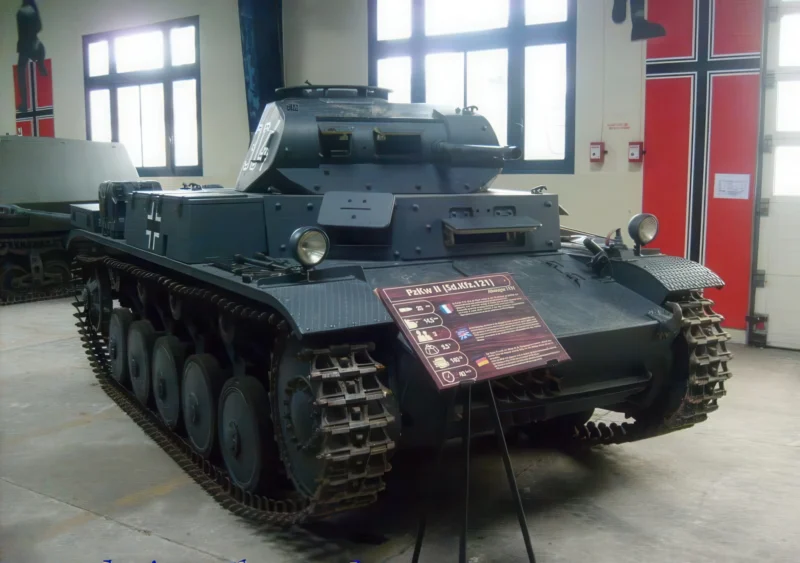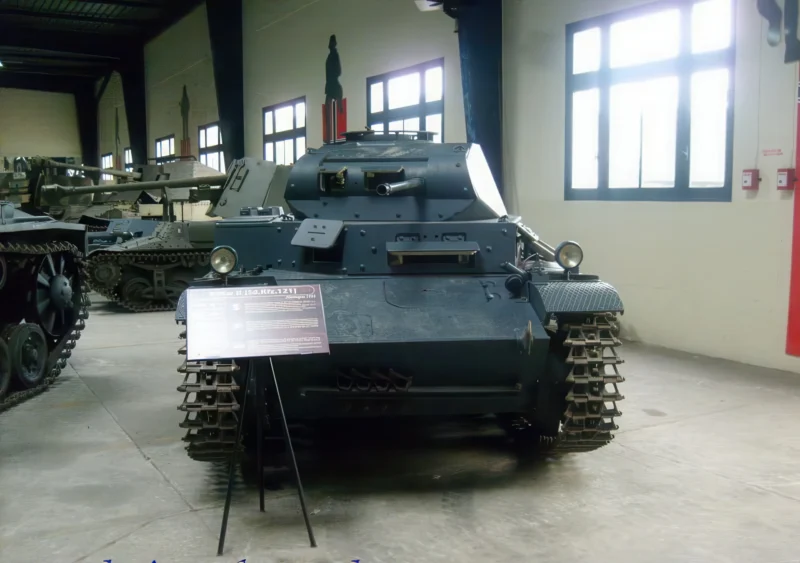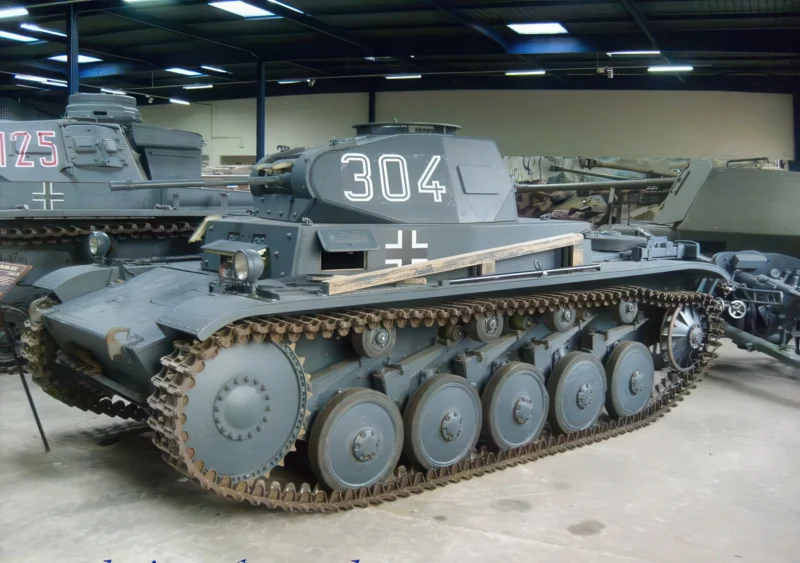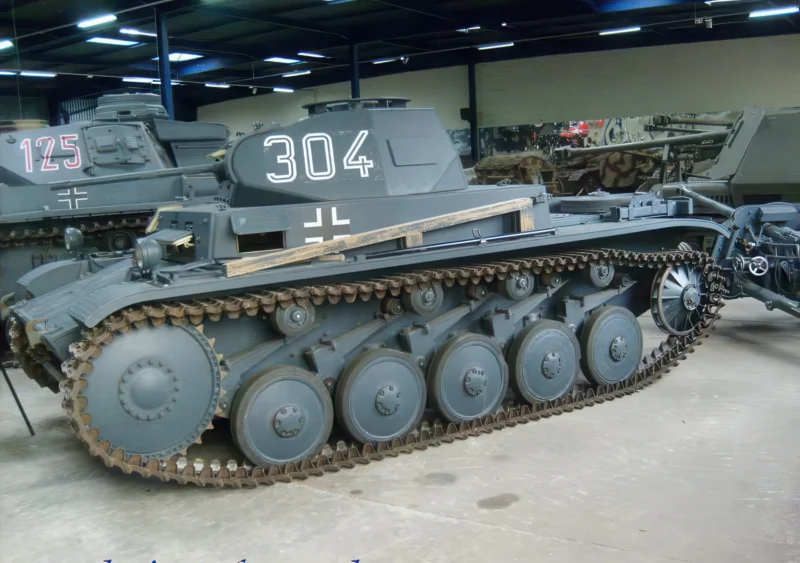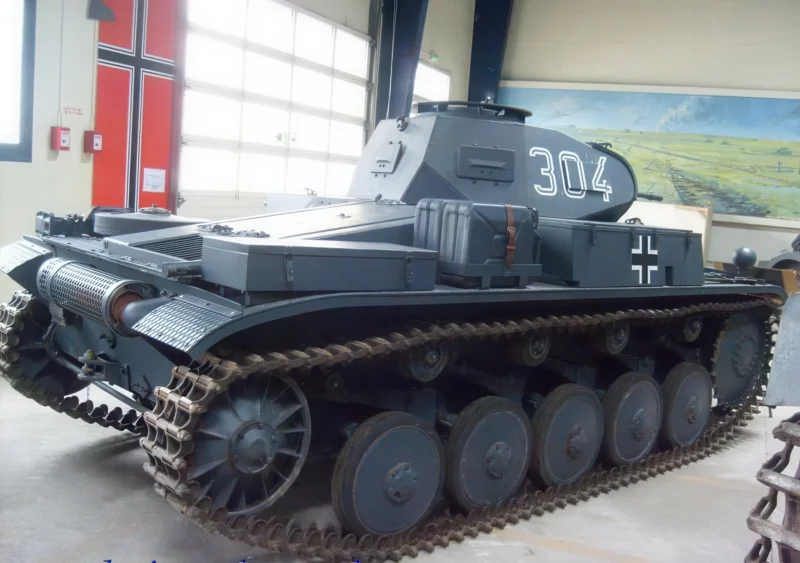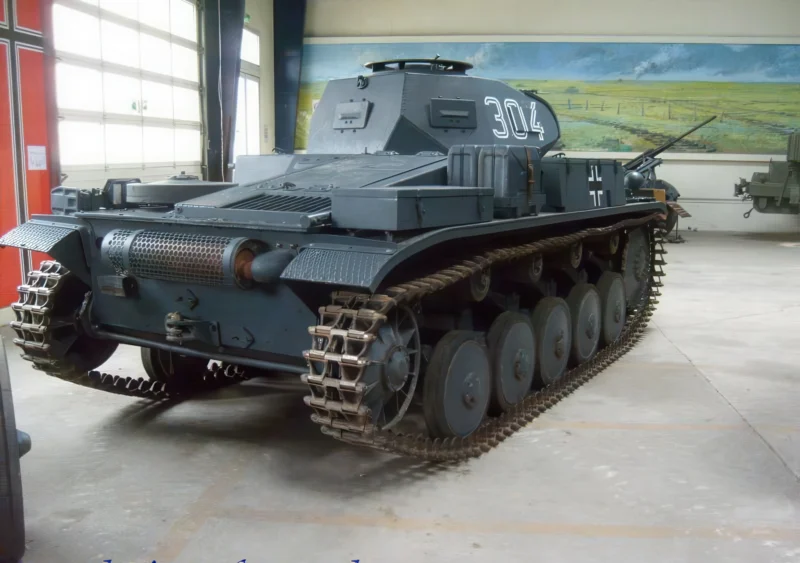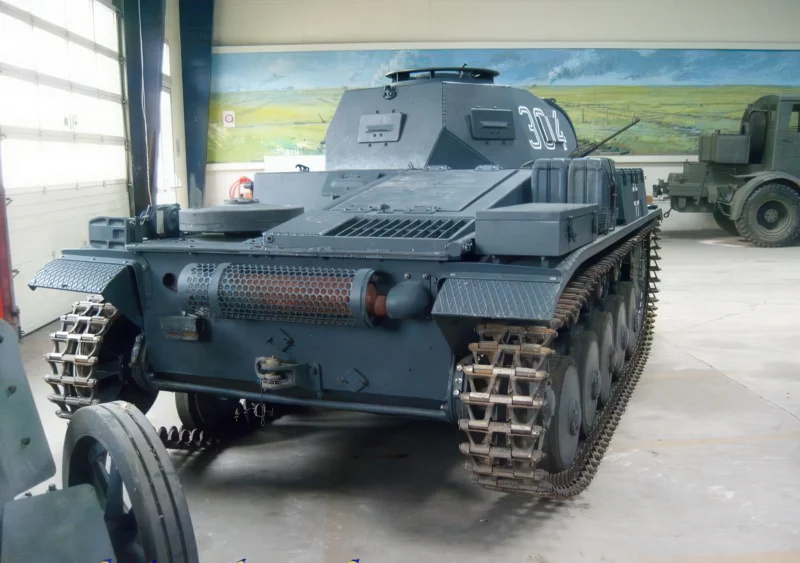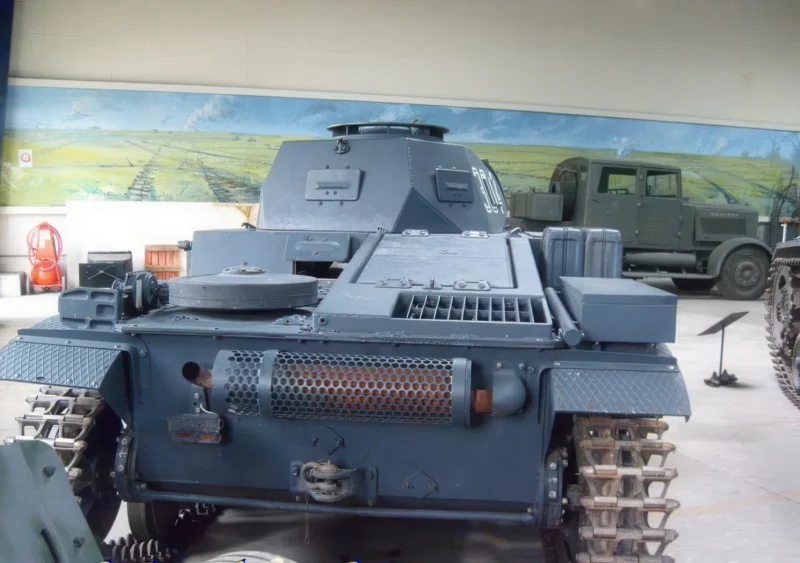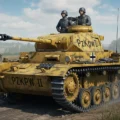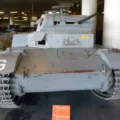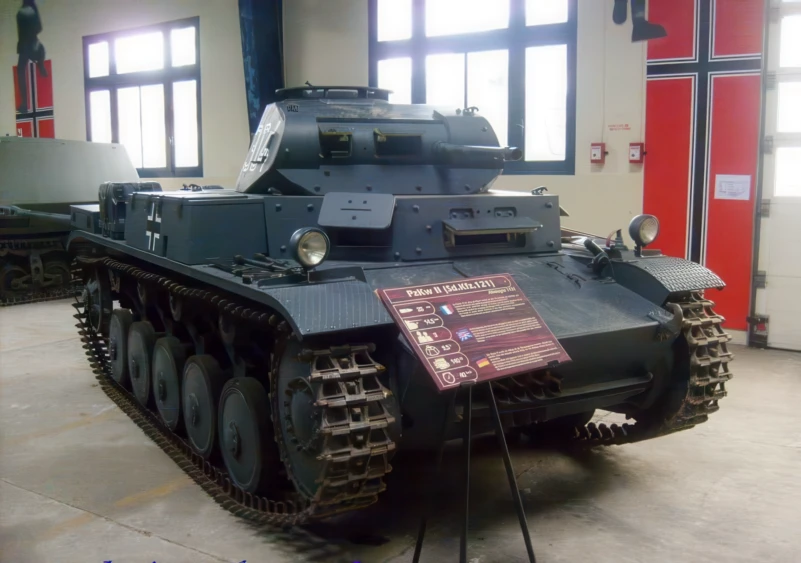
Pzkpfw II | |
|---|---|
| Płaci | Niemcy |
| Kategorii | Zbiorniki |
| Typu | Samochód |
| Opis | Album 103 walkiround zdjęcia zbiornika "PzKpfw II" |
Galeria zdjęć na PzKpfw II, Panzerkampfwagen II skrócony PzKpfw II i noszący oznaczenie Sd.Kfz.121 był niemieckim czołgiem podczas II wojny światowej. Podobnie jak jego poprzednik PzKpfw I, został zaprojektowany jako tymczasowa maszyna, która pozwala czekać na przybycie czołgów PzKpfw III i PzKpf IV. W rzeczywistości miały być wykorzystywane do celów szkoleniowych do szkolenia załóg panzerwaffe w taktyce przyszłego Blitzkriega.
Mais le retard dans la mise au point et la production des Panzers II et IV obligea l’état major Allemand à les utiliser en grand nombre durant le début de la Seconde Guerre mondiale jusqu’à l’année 1941 où ils purent être progressivement remplacés. Le Pzkpfw II Resta był później używany jako pojazd rozpoznawczy i podwozie dla Marder II, a także Wespe.
Źródła: Panzer II na Wikipedii
Zobacz też:
Role and Historical Context
The Panzer II was a German light tank designed in the mid-1930s. It was created to fill a critical gap in the German armored forces while the more advanced Panzer III and Panzer IV medium tanks were still being developed. Essentially a stopgap measure, the Panzer II was never intended to be a long-term mainstay of the Panzerwaffe.
Despite its planned temporary role, the Panzer II became the most numerous German tank during the early campaigns, participating in the invasions of Poland (1939) and France (1940). Its presence ensured that the new tank divisions had the necessary numbers of fighting vehicles to execute the Blitzkrieg strategy.
Design and Specifications (Ausf. C-F)
The PzKpfw II was characterized by its speed, lightness, and the use of an auto-cannon as its main weapon.
| Specyfikacja | Detail |
|---|---|
| Weight (Mass) | Approximately 8.9 – 9.5 tonnes (depending on variant) |
| Załogi | 3 (Driver, Commander/Gunner, Loader/Radio Operator) |
| Uzbrojenie główne | 1 x 2 cm KwK 30 or KwK 38 L/55 autocannon |
| Uzbrojenie dodatkowe | 1 x 7.92 mm MG 34 machine gun (coaxial) |
| Armor Thickness (Front) | Ranged from 14.5 mm (early models) up to 35 mm (later Ausf. F) |
| Silnika | Maybach HL 62 TRM gasoline engine (approx. 140 hp) |
| Speed (Road) | Around 40 km/h |
Combat Limitations and Legacy
- Obsolete Armament: The 20 mm autocannon was capable of high rates of fire, making it excellent against infantry, soft-skinned vehicles, and light armor. However, its small caliber was ineffective against the armor of most Soviet and British tanks encountered from 1941 onward.
- Light Protection: While later variants increased frontal armor, the thin side armor remained vulnerable to even standard anti-tank rifles and light artillery.
- Shift to Reconnaissance: By the time of Operation Barbarossa (1941), the tank was recognized as obsolescent for main combat. It was increasingly relegated to reconnaissance platoons due to its speed and relatively small size.
- Chassis Utilization: The greatest contribution of the Panzer II was arguably its highly adaptable chassis. It became the base for successful self-propelled artillery pieces like the Wespe (Wasp) and tank destroyers like the Marder II, which saw service long after the tank version had been withdrawn from the front line.
Views : 9317
